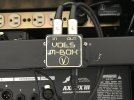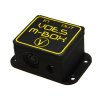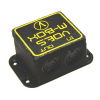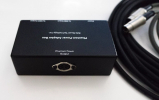JSXtremist
Inspired
Is bi-directional MIDI possible with the Axe-Fx 3? I used to run bi-directional MIDI between the MIDI In of my Axe-Fx 2 and the MIDI Out of my RJM Mastermind GT/22 (plus phantom power via an adapter I made that slipped power from the Mastermind power supply in on pins 6 and 7 of the MIDI cable). What is the MIDI pinout on the Axe-Fx 3?
Last edited:





